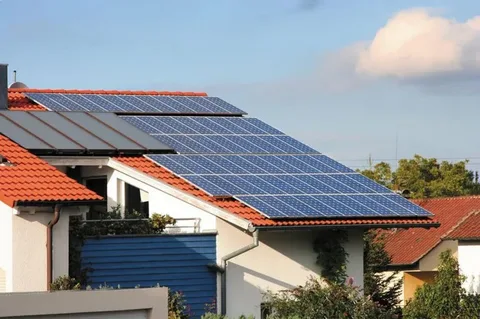As the push for renewable energy continues to gain momentum worldwide, 2025 promises to be a pivotal year for homeowners considering solar energy installations. With the increasing availability of government incentives and tax credits solar system for home in 2025, more individuals are finding it financially feasible to invest in solar power, helping reduce carbon footprints while saving on energy bills.
Understanding Government Incentives for Solar Energy
Government incentives are financial benefits provided by federal, state, and local governments to encourage the adoption of renewable energy solutions like solar panels. These incentives can come in various forms, including rebates, grants, and tax credits that significantly reduce the upfront costs of installing solar systems.
In 2025, several new and ongoing programs aim to make home solar systems more accessible and affordable. By leveraging these incentives, homeowners can offset a significant portion of the installation costs, making solar energy a viable option for many.
Federal Tax Credits Available in 2025
One of the most significant incentives available to homeowners in 2025 is the federal solar investment tax credit (ITC). This credit allows homeowners to deduct a percentage of the cost of installing a solar energy system from their federal taxes. The percentage for 2025 remains attractive, encouraging continued adoption of solar technology.
The ITC not only reduces the initial cost but also increases the return on investment over the lifespan of the solar system. Additionally, some states offer supplementary tax credits, amplifying the financial benefits.
State and Local Incentives Boost Savings
Apart from federal tax credits, many states and municipalities provide additional incentives for homeowners installing solar panels. These can include:
- Cash rebates from utility companies or state programs.
- Property tax exemptions that prevent increased home values due to solar installation from raising property taxes.
- Sales tax exemptions on the purchase of solar equipment.
These government incentives and tax credits for home solar systems in 2025 vary widely depending on location, so it’s essential for homeowners to research the specific programs available in their area.
The Environmental and Financial Impact of Solar Incentives
Utilizing government incentives and tax credits can dramatically lower the financial barrier for homeowners interested in solar power. This, in turn, accelerates the shift toward cleaner energy sources, contributing to a reduction in greenhouse gas emissions.
Furthermore, with rising energy costs, installing a solar system with the help of government incentives can result in substantial long-term savings on electricity bills. In 2025, the combination of favorable incentives and improved solar technology efficiency creates an ideal environment for homeowners to invest in solar.
Conclusion
The landscape for solar energy adoption in 2025 is bright, thanks in large part to the continued availability of government incentives and tax credits for home solar systems in 2025. These programs play a crucial role in making solar energy affordable and accessible, helping homeowners save money while contributing to a sustainable future. If you’re considering solar energy this year, exploring the full range of available incentives is a smart first step toward a cleaner, cost-effective energy solution.


